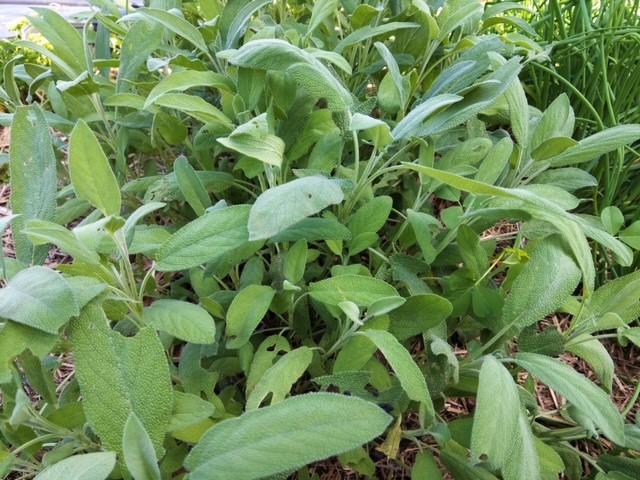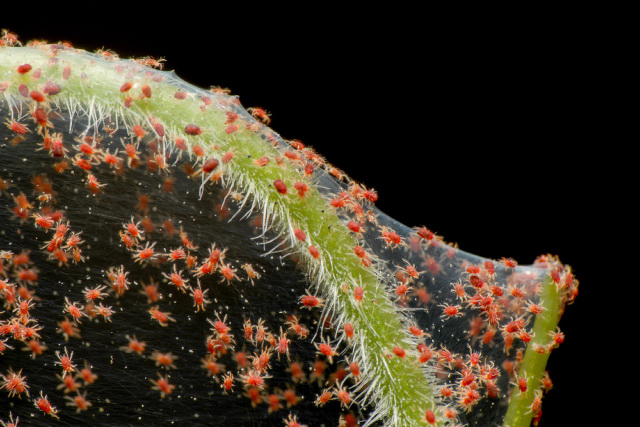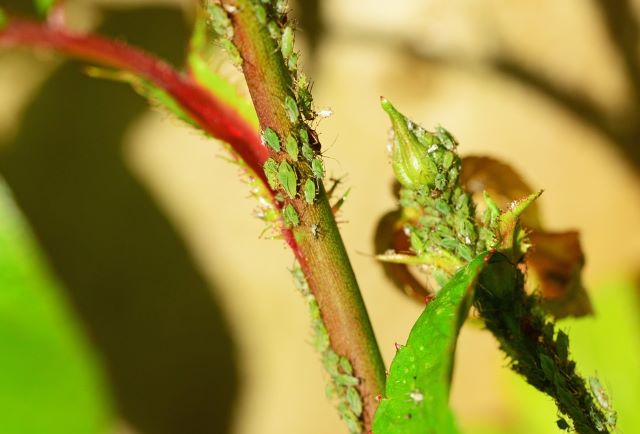Although sage is considered a hardy plant, this drought-resistant herb is affected by pests, diseases, and other issues that may cause your plant to die. So if you find your sage plant dying, you’re in the right place. We’ll look at what causes sage to die along with solutions.

Table of Contents
Why is My Sage Dying?
The most common reasons your sage plant is dying are too much or too little sunlight, the wrong temperature, overwatering, too much fertilizer, pests such as spider mites, and aphids, and diseases such as verticillium wilt and root rot.
Read on to find out more about each of the causes of why your sage plant is dying, and how to fix it.
1. Too Much or Too Little Sunlight
As a drought-resistant plant, sage thrives in full sunlight, and should receive at least 6-8 hours of sunlight a day. If your sage receives less than 6 hours of sunlight a day it will begin to die. It is best to plant sage in a sunny spot in your garden.
Sage that does not get between 6-8 hours of sunlight a day will still grow, but it won’t flower. Additionally, if your sage plant is not getting enough sunlight it could be flavorless.
2. The Wrong Temperature
Sage thrives in temperatures ranging between 60ºF and 70ºF (15-21 ºC). If your sage plant gets more than 8 hours of direct sunlight per day, or you live in a particularly hot climate where temperatures regularly reach over 75ºF (24 ºC) and your sage is dying, that could be the reason.
Prolonged exposure to direct sunlight and high temperatures will stress your plant, causing it to dehydrate. The leaves on your plant will turn yellow and look dry and eventually fall off. It is best to plant your sage in an afternoon-shaded spot if you live in an area where humidity often accompanies extremely hot temperatures.
3. Overwatering
Sage grows well in warmer, dry conditions in well-drained sandy soil. If your sage is beginning to wilt or die, it could be because it is unhappy with the soil’s moisture level.
Sage is a plant that prefers infrequent rainfall and is drought resistant. What that means for you as a home gardener, is that if you are watering your sage more than once per week, you are probably overwatering.
It’s best to water your sage plants once every two weeks. Alternatively, if you live in a region with high rainfall, that could be the root cause of your overwatering problem.
Overwatering can result from natural climate conditions in your region. To fix the problem, you will need to make sure you properly prepare the soil before planting to ensure it drains correctly. Simply add 1 third sand to two-thirds compost.
Overwatering sage will cause the roots of the plant to be damp, which will not only stress the plant, but it can cause certain fungi to grow.
4. Too Much Fertilizer
If your sage is beginning to droop, has yellowing leaves, and looks like it is dying, it could be because it has been over-fertilized. Sage thrives in sandy soil which doesn’t contain or retain many nutrients, meaning sage does not need as much fertilizer as some of your other garden plants may need. Too much nitrogen can kill sage rather than help it.
Apart from yellowing leaves and a dying plant, signs that your sage is dying due to over-fertilization are:
- An excess of foliage on the plant that is sappy and soft. This makes the plant more vulnerable to diseases.
- The leaves will not smell or taste as pungent.
The first thing to do if you think you have applied too much fertilizer is to not apply it anymore. Secondly, remove any visible fertilizer. The sage plant will recover from being overfed.
5. Pests
Spider mites

Another culprit behind your dying sage plant could be spider mites. Spider mites are minute spiders that suck the juices from your plants. If spider mites are the cause of your dying sage plants, you will notice small lightly colored dots on your sage leaves.
Spider mites reproduce quickly and soon those specks will lead to discolored, withered, and dying sage leaves. If you suspect you have spider mites, check the underside of the plant’s leaves, you may see delicate webs.
To prevent spider mites you can plant several nectar-producing plants nearby, as these encourage the spider mites’ natural predators (such as ladybirds) to inhabit your garden. If you have a spider mite infestation, I have found the best way to get rid of them is a blast of cold water from the garden hose followed by a spray of neem oil.
Aphids

Aphids are a common garden pest that can wreak havoc if left unchecked. Like spider mites, these tiny insects drink the sap from your sage plants. Aphids cause discoloration of your sage plant leaves.
A large enough infestation of aphids can kill your sage plant as not only will they cause discoloration of the leaves, but they can cause sooty mildew to grow.
The first sign your sage plant is hosting aphids is the appearance of little holes in the leaves. You may notice a sticky secretion called honeydew on the leaves too. You will see aphids on the plant’s stem or the underside of the leaves.
Luckily, aphids are a fairly easy pest to get rid of using items you already have at home. The best way to remove aphids from your sage plant is to spray the plant with cold water from the garden hose.
If there are not many aphids left, you can wipe them off by hand. Next, spray the plant with a mixture of 1 part dishwashing soap and 5 parts water. This will work on all plants, not just sage. Insecticidal soap is also a good option and handy to have on hand.
6. Disease
Verticillium Wilt
If your sage plant’s leaves are turning yellow, curling, wilting, or falling off, verticillium wilt could be the cause. These symptoms usually occur when the temperature is milder, during fall or spring, and progress rapidly in warmer weather.
Verticillium wilt is a fungal disease that lives in the soil around your plants and infects your sage plant through its roots. The fungus travels up the plant leaving the inside of your sage plant’s stems dark and discolored. To check if your sage is dying due to this fungus, peel back the layers on the plant’s stem.
Plants affected by verticillium wilt must be removed as there is no cure. Be sure to take out as much of the root system as possible. Despite removing the infected plants, the fungus will remain in the soil.
Make sure you sterilize your gardening equipment and shoes so you don’t spread the disease. You can sterilize your equipment by dipping them into a mixture of 1 part bleach to 9 parts water.
The soil can be treated with a process called solarization. The process involves using the sun to heat the soil to a temperature that will kill the disease.
Root Rot
Root rot is a disease that flourishes in damp soil conditions caused by poor soil drainage and overwatering. A sage plant infected with root rot will wilt and present with brown leaves and stems.
As the symptoms of root rot mimic those of a pest infestation or other issues, it is best to gently dig around the plant to have a look at the root system. If your sage plants have root rot you may notice a rotten smell coming from the soil, and the roots will have decayed.
You can transplant the affected sage plant if you catch the disease early and the damage is not too severe. You can remove the heavily infected roots, and apply cinnamon or sulfur powder to the others. Remember to sterilize your gardening equipment.
It is easier to prevent root rot than it is to cure it. You can prevent root rot by ensuring that you do not overwater your sage plants. In addition, by planting sage plants in well-draining soil, you can prevent root rot.
Further Reading:
